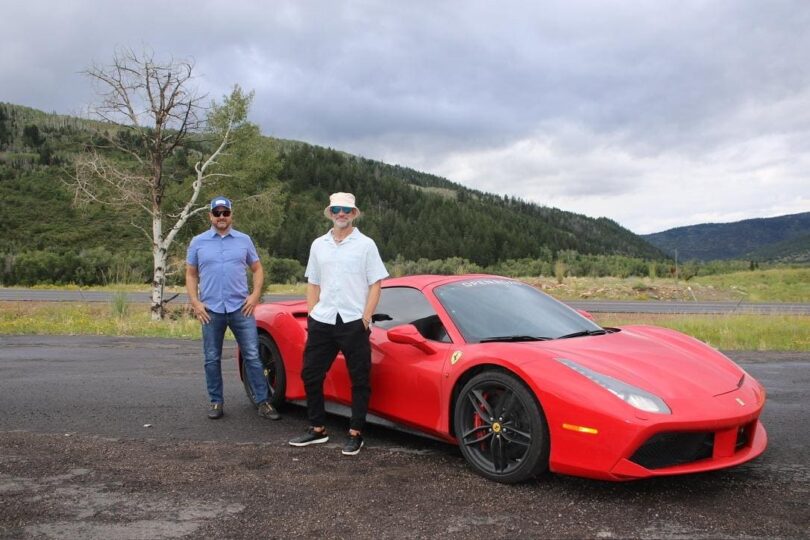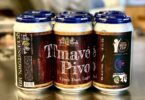Porsche 911 GT3 at the Montage Deer Valley
The adrenaline rush of driving supercars at high speeds on public roads just hits different.
After many years—dare I say, decades—of doing this as part of my job, that realization hit me just recently. I was driving a Tweety-Bird yellow, 2022 Porsche 911 GT3 on Utah’s windy Route 35. We’d just started to climb toward Wolf Creek Pass, which tops out around 9,000 feet between the hamlets of Woodland and Hanna, Utah. The roads were damp from recent rain as we ascended into the cloud layer on this superb stretch of asphalt, one I’d driven many times before in my own 911 Carrera 4S.
The Porsche 911 GT3 is powered by a 4.0-liter, naturally aspirated flat six with 502 horsepower. This version features the seven-speed dual-clutch automatic (a.k.a. PDK) transmission with paddle shifters. To paraphrase Carroll Shelby in the film Ford v Ferrari, “There’s a point at 9,000 RPMs (the 911’s red line) where everything fades. The machine becomes weightless. It disappears.” That’s also when the adrenaline hits.
“Adrenaline, also known as epinephrine, is a stress hormone. An adrenaline rush can feel like anxiousness, nervousness, or pure excitement as your body and mind are preparing for an event,” according to WebMD. As part of this preparation, the body sends a rush of blood to the muscle groups that need it most for a fight-or-flight response. Naturally, the legs get a big dose. This is essential when mountain biking or skiing, and you hardly notice it because the legs are so engaged. When driving, however, the legs are more relaxed. Indeed, high-speed driving, whether on track or public roads, requires it. This creates a unique sensation in that the legs are flush with blood from the adrenaline boost, but it’s essentially a miscommunication. Leg muscles are not required, as there is 502 horsepower at the flick of a toe, so you just feel this rush of blood into your quads as you’re hitting red-line shifts. There’s nothing else like it.
Of course, this response is heightened on public roads due to the added risk of law enforcement (if exceeding the speed limit, which I certainly was not).
The author (right) with his attorney and the Ferrari 488 GTB Spider
The Porsche 911 GT3 was the first of three supercars I drove as part of the Xtreme Xperience Open Road program. The company started with track-based supercar experiences, where you drive with instructors on racetracks at 33 different locations throughout the US. More recently, the company exported the track program to destinations in nine states including Park City, Utah. This particular program starts and ends at the Montage Deer Valley, which is perhaps the best resort hotel in the area and a compelling reason to visit on its own. There are a range of packages to choose from. The half-day package starts at 8:30am and wraps up around 1:30pm. It includes three different cars and takes drivers on a tour of the Wasatch Mountains on Utah’s ultra-scenic and sinewy Routes 35, 150 and 248.
As an automotive journalist, I’m accustomed to getting these same exotic cars for a week at a time in Los Angeles to pretty much do as I wish. Which is to say, without adult supervision. So I was a bit skeptical about how fun it would be to drive in a train of a six or eight supercars with varying ability levels following a lead car. Would this be a leisurely drive through the Utah countryside in second gear? Or would we be able to push the limits—physically and legally—of what these cars are capable of?
I can report with confidence that it’s the latter. The Xtreme Xperience lead car is often driven by professional driving instructors, including those with past experience working for the Mercedes AMG Driving Academy. So they possess the knowledge and skill to properly guide these supercar trains and to set the following order by ability level, such that we can open them up and get a true supercar experience. Plus, the lead has a radar detector, and we all have radios. There is also a follow car, so you can drive at whatever pace is most comfortable for you.
In addition to the 911, we drove a 2017 Ferrari 488 GTB Spider, which puts out 661 horsepower from a twin-turbo 3.9-liter V8, and a 2020 Lamborghini Huracán EVO Spyder with 630 horsepower and a naturally aspirated, 5.2-liter V10—certainly the best exhaust note of the three. I’d driven different versions of both the Ferrari 488 and Lamborghini Huracán EVO Spyder in the past. Except that the Ferrari was the track-bred Pista variant, and the Lambo was rear-wheel drive.
The author (right) with his attorney and the Lamborghini Huracán EVO Spyder
As I got settled into the Porsche 911 to start the day, one of the Xtreme Xperience representatives remarked that this would be the closest to a daily driver among the three we’d drive. The reality is that it’s quite the opposite. The GT3 was the only car among the three that is track worthy. You can feel it in the steering response alone. The 911 wants to corner fast. You’re also sitting in carbon-fiber racing seats, which are supportive and effective if not entirely comfortable. This is a driver’s car and would be my personal choice of the three. Not surprisingly, most others in the group preferred the convertibles.
The Ferrari and Lambo are both luxury sports cars. To be clear, both platforms (488 and Huracán) offer track-worthy variants, but these are convertibles. And any time you drop the top, you also drop performance by adding weight and throwing off the balance. As a rear-wheel-drive car, the Ferrari handled much better than the Lambo with all-wheel-drive. It would have been more consistent to drive the Porsche 911 Turbo S Cabriolet as opposed to the GT3. Then the handling would be equally bad for all three. Thankfully, the GT3 saved the day and gave me that distinctive shot of driving-a-supercar-0n-public-roads adrenaline to the legs.








